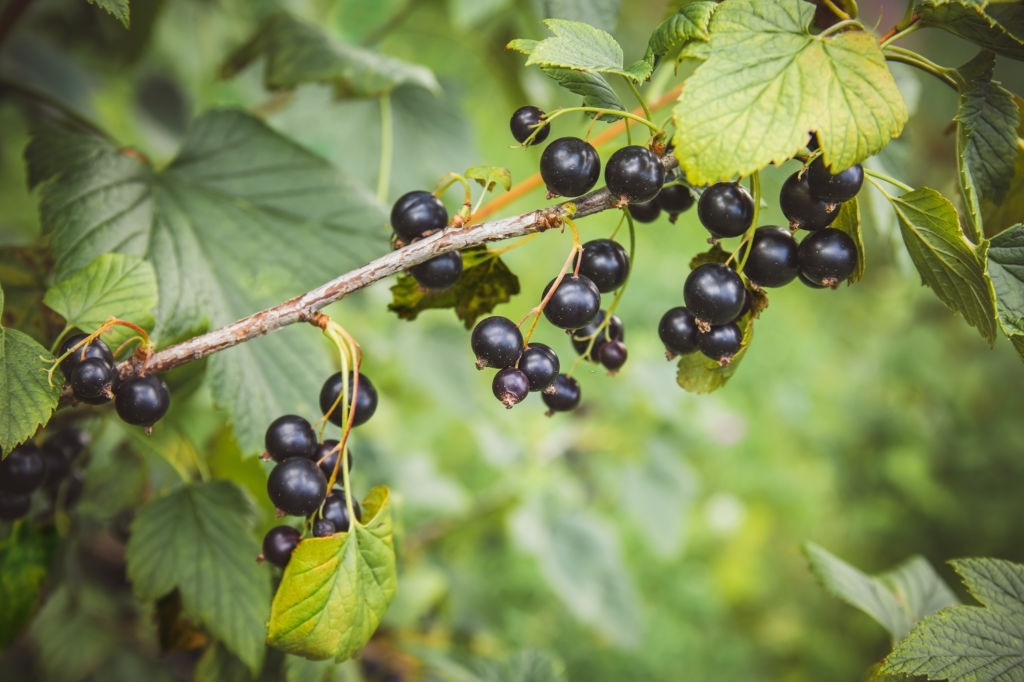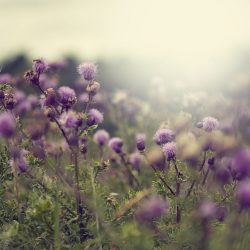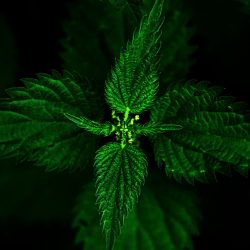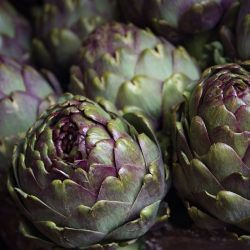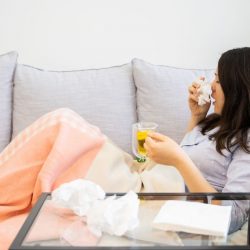The term “blackcurrant” takes its etymology from the Phoenician. This vegetal blackcurrant is a word appearing in the 16th century, at the same time as the first writings granted to it ( Rembert Dodoens , 1583) as well as the first medicinal mentions of its leaves and fruits ( Petrus Forestus , 1614).
A little history
Dodoens is Flemish, Forestus is Dutch. They are therefore relatively northern authors, who fit relatively badly with the way in which Anne de Bretagne calls blackcurrant in her Grandes heures “ pepper tree of Spain ”. However, this is proof that blackcurrant was known in France around the year 1500.
In France, it is Philibert Guybert , doctor of the faculty of medicine of Paris, who will finally put the first information on blackcurrant on paper through his Médecin charitable published in the 17th century. But it was only at the instigation of Father Pierre Bailly de Montaran that blackcurrant was popularized with its cultivation and its extensive medical use. In 1712, he also published a work entitled The admirable properties of blackcurrant , of which he said that there was “no one who, having gardens, should plant a large number for the needs of his family”. .
What are the main pharmacological properties of blackcurrant leaves?
Antioxidant and cytoprotective properties:
In vitro , blackcurrant leaf extracts exert high antioxidant activity . Thus, their presence on the surface of the erythrocyte membrane leads to protection against free radicals. Furthermore, they have shown their antioxidant and more particularly anti-lipoperoxidative properties on hepatic microsomes of subjects subjected to oxidative stress.
The blackcurrant extract is rich in polyphenols and can indeed induce apoptosis in various cancer cells , by a molecular mechanism which passes through the mitochondrial pathways mediated by MAPK and PI3K / Akt.
Anti-inflammatory properties:
-
Inflammation modulator:
An ex vivo study on the heart of an isolated subject showed a reduction in the synthesis of prostaglandins more efficiently with total flavonoids extracted from blackcurrant leaves than with isolated isoquercitrin and rutin . According to a 2002 study, the proanthocyanidins (OPC) of blackcurrant leaves have a dose-dependent stimulatory effect on the production of proteoglycans and the release of type II collagen on a line of human chondrocytes in vitro . These OPCs (in this case prodelphinidins) decrease in a dose-dependent manner the synthesis of prostaglandin E2 and inhibit cyclooxygenases. In addition, blackcurrant protects against the degradation of collagen of enzymatic origin. (collagenase, elastase, peroxidase…).
A 2007 study showed that quercetin and kaempferol, flavonoids found in black currant leaves, modulate the concentrations of pro-inflammatory mediators such as COX-2, CRP and iNOS, thus contributing to the anti-inflammatory effects of the plant, by blocking the activation mechanism of NF-kB.
Another study from 2015 also showed that extracts from blackcurrant leaves, due to their richness in phenolic compounds, were among the eight extracts that were the most inhibitory of the activity of cytosolic phospholipase A2 -cPLA2α involved upstream of the inflammatory cascade. .
Another study from 2016 further showed that blackcurrant berry extract reduced the inflammatory response and oxidative stress in vitro , and repaired the intestinal hyperpermeability caused by inflammation mediators.
-
Angioprotective action by modulation of leukocyte migration:
The extract of blackcurrant leaves is protective of the capillary wall (due to OPCs and its vitamin P and C activity). It decreases permeability, erythrocyte aggregability and plasma viscosity. It increases capillary resistance and improves blood rheology.
In vitro analyzes carried out on endothelial cells, previously incubated with OCPs from blackcurrant leaves and stimulated by TNF-α, have also demonstrated an inhibitory effect of the compounds on the expression of the mRNA of ICAM. -1 and a stimulatory effect on the expression of VEGF1 mRNA.
-
Anti-edematous activity:
In a model of edema induced by carrageenan, the administration of OCP from blackcurrant leaves shows in the acute phase a dose-dependent edema reduction effect similar to that of a reference non-steroidal anti-inflammatory drug ( indomethacin) when given in high doses.
-
Antiallergic activity:
Blackcurrant leaf extract reduces the release of histamine and exerts an anti-inflammatory effect on alveolar cells, lowering interleukin-4 (IL-4) and increasing eotaxin-3 (CCL26).
-
Anti-infectious activity:
Studies have shown antiviral activity of extracts of Ribes nigrum , in vitro on type 1 and 2 herpes viruses, in vitro and in vivo on Influenza A viruses. infection of the virus, confirming its strong antiviral power on human strains of Influenzavirus A.
A 2013 study confirmed its anti-influenza viral activity in vitro and in vivo , and showed that it worked by preventing entry of the virus into host cells.
-
Pleural anti-inflammatory activity:
In an inflammatory model of pleurisy, blackcurrant leaf OPCs allowed a reduction in pulmonary damage , a dose-dependent decrease in the volume of exudate, a decrease in the infiltration of the pleural cavity and pulmonary tissue by polymorphonuclear neutrophils. , a reduction in the cytokines of inflammation, and a lower amount of nitrites and nitrates.
-
Metabolic anti-inflammatory activity:
In 2019, the same authors who had already shown that the consumption of blackcurrant attenuates hepatic inflammation and inflammatory responses stimulated by lipopolysaccharides in splenocytes in obese subjects, demonstrated in vivo that the metabolites of Ribes nigrum do not exert not their anti-inflammatory effect by directly modifying macrophage phenotypes, but more likely by inhibiting the production of inflammatory factors associated with obesity .
Peripheral analgesic properties:
In a pain assessment model, the preventive administration of a 15% ethanolic blackcurrant extract reduced the pain threshold more effectively than paracetamol used as a control.
Are there any precautions for use with Blackcurrant?
Contraindications:
- Blackcurrant leaf extract is not the appropriate treatment for edema associated with heart or kidney failure.
Precautions for use:
- The concomitant use of synthetic diuretics is not recommended, except medical advice, as well as contraceptive IUD.
- The use of this plant is not recommended by the EMA in pregnant or breastfeeding women as well as in children.
How to take Blackcurrant and in what dosage?
Dry form:
- As a food supplement, in the form of a standardized extract of a fresh plant, a dry extract, a powder in tablet or capsules .
Liquid form:
- Standardized fluid extract of fresh plant : 5 ml twice a day in a glass of water.
- Full suspension of fresh plant : 5 ml 2 to 3 times a day in a glass of water.
- Hydroalcoholic fluid extract , glycerine macerate buds D1 : 30 to 50 drops, 3 times a day.
- In juice from its berries, blackcurrant is consumed to relieve joint and rheumatic pain, heavy legs or in case of soft stools.
- Decoction 5% to 10%: 1 cup, 3 times per day.
Blackcurrant in masterly preparation of standardized extracts in liquid form (EPS)
In combination with ginseng :
In physical fatigue, recovery after exertion, post-infectious asthenia in adults.
In association with licorice :
To fight against arterial hypotension, functional hypocorticism, in particular in a context of asthenia or even exhaustion.
In association with nettle aerial parts :
Against post-infectious asthenia, arthritis of peripheral joints, chondroprotection.
In association with plantain :
In the fight against respiratory allergies (rhinitis, asthma).
In combination with turmeric and figwort :
In the use of a basic treatment of degenerative articular and periarticular painful rheumatism.
In association with orthosiphon and meadowsweet :
In prevention of hyperuricemia or lithiasis.
Medical bibliographic sources and clinical trials :
- Bonarska-Kujawa D. et al., Biological activity of blackcurrant Extracts (Ribes nigrum L.) in relation to erythrocyte membranes; Biomed Res Int., 2014
- Ehrhardt C. et al. A plant extract of Ribes nigrum folium possesses anti-influenza virus activity in vitro an in vivo by preventing virus entry to host cells; PloS One, 2013
- Lui B. et al., Black Currant (Ribes nigrum L.) Extract Induces Apoptosis of MKN-45 and TE-1 Cells Through MAPK- and PI3K/Akt-Mediated Mitochondrial Pathways, J Med Food, 2016
- Chanh P. et al. Comparative effects of total flavonoids extracted from Ribes nigrum leaves; rutin and isoquercitrin on biosynthesis and release of prostaglandins in the ex vivo rabbit heart; Prostaglandins Leukot Med., 1986
- Mongold J.J. et al., Anti-inflammatory activity of Ribes nigrum leaf extracts in rats, Plantes Med Phytother., 1993
- Garcia-Mediavilla V. et al. The anti-inflammatory flavones quercetin and kaemferol cause inhibition, cyclooxygenase-2 and reactive C-protein, and doxn-regulation of the nuclear factor kappaB pathway in Chang Liver cells; European Journal of Pharmacology, 2007
- Arnold E. et al., Inhibition of Cytosolic Phodpholipase A2α (cPLA2α) by Medicinl Plants in Relation to Their Phenolic Content; Molecules, 2015
- Knox Y.M. et al., Anti-influanza virus activity of crude extract of Ribes nigrum L, Phytotherapy Research, 2003
- Haasbach E. et al. Antiviral activity of Ladania067, an extract from wild black currant leaves against influenza A virus in vitro and in vivo; Frontiers in Microbilogy, 2014
- Olejnik A. et al., A Gastroin-testinally Digested Ribes nigrum L. Fruit Extract Inhibits Inflammatory Response in a Co-culture Model of Intestinal Caco-2 Cells and RAW264.7 Macrophages; J Agric Food Chem., 2016
- Lee Y. et al., Blackcurrant (Ribes nigrum) Extract Exerts an Anti-Inflammatory Action by Modulating Macrophage Phenotypes, Nutrients, 2019

